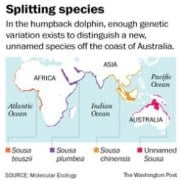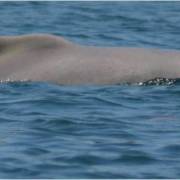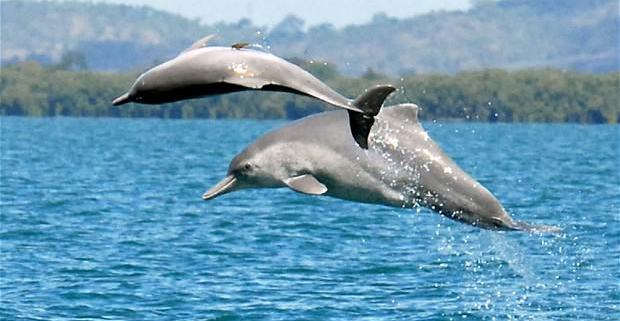Humpback Dolphins
 Last month, scientists announced the discovery a new species of dolphin living off the coast of Northern Australia. While most people are familiar humpback whales, few know about humpback dolphins. Scientists have known about Atlantic and Indo-Pacific species of humpback dolphins for some time, but recent physical and genetic tests by researchers have revealed that there are actually four distinct species of this beautiful creature. Humpback dolphins are distinguishable by a peculiar hump just below the dorsal fin and are found in the Atlantic, Pacific, and Indian Oceans.
Last month, scientists announced the discovery a new species of dolphin living off the coast of Northern Australia. While most people are familiar humpback whales, few know about humpback dolphins. Scientists have known about Atlantic and Indo-Pacific species of humpback dolphins for some time, but recent physical and genetic tests by researchers have revealed that there are actually four distinct species of this beautiful creature. Humpback dolphins are distinguishable by a peculiar hump just below the dorsal fin and are found in the Atlantic, Pacific, and Indian Oceans.
Humpback dolphins grow up to 8 feet in length and their coloring ranges from dark gray to pink and/or white. The species generally inhabits coastal waters, deltas, estuaries, and occurs throughout the Indian and Pacific oceans to the coasts of Australia. According to Guido Parra of Flinders University in Adelaide, Australia, this particular species of dolphin are very shy and keep their distance, unlike their curious and friendly cousins that most people are used to.
The scientists, who were working for the Wildlife Conservation Society, the American Museum of Natural History, and a number of other organizations contributed to the study. The researchers arrived at their conclusions after examining 235 tissue samples and 180 skulls from mostly beached humpback dolphins around the globe to define genetic and morphological distinctions among the species. These findings were published in the November 2013 issue of Molecular Ecology.
 “New information about distinct species across the entire range of humpback dolphins will increase the number of recognized species, and provides the needed scientific evidence for management decisions aimed at protecting their unique genetic diversity and associated important habitats,” said Howard Rosenbaum, director of WCS’s Ocean Giants program and senior author of the paper. The Atlantic humpback dolphin is considered “Vulnerable” according to the IUCN Red List, whereas the Indo-Pacific dolphin species Sousa chinensis is listed as “Near Threatened.” Humpback dolphins are threatened by habitat loss and fishing activity.
“New information about distinct species across the entire range of humpback dolphins will increase the number of recognized species, and provides the needed scientific evidence for management decisions aimed at protecting their unique genetic diversity and associated important habitats,” said Howard Rosenbaum, director of WCS’s Ocean Giants program and senior author of the paper. The Atlantic humpback dolphin is considered “Vulnerable” according to the IUCN Red List, whereas the Indo-Pacific dolphin species Sousa chinensis is listed as “Near Threatened.” Humpback dolphins are threatened by habitat loss and fishing activity.
The major threat to this newly identified species habitat degradation due to coastal development, mining, and resource exploitation. Although the new species have not been named yet, the scientists are now preparing their formal proposal for the recognition of the new species. Once the International Whaling Commission and the Society for Marine Mammalogy have accepted their proposal, this newly identified species of dolphin will be officially recognized.

